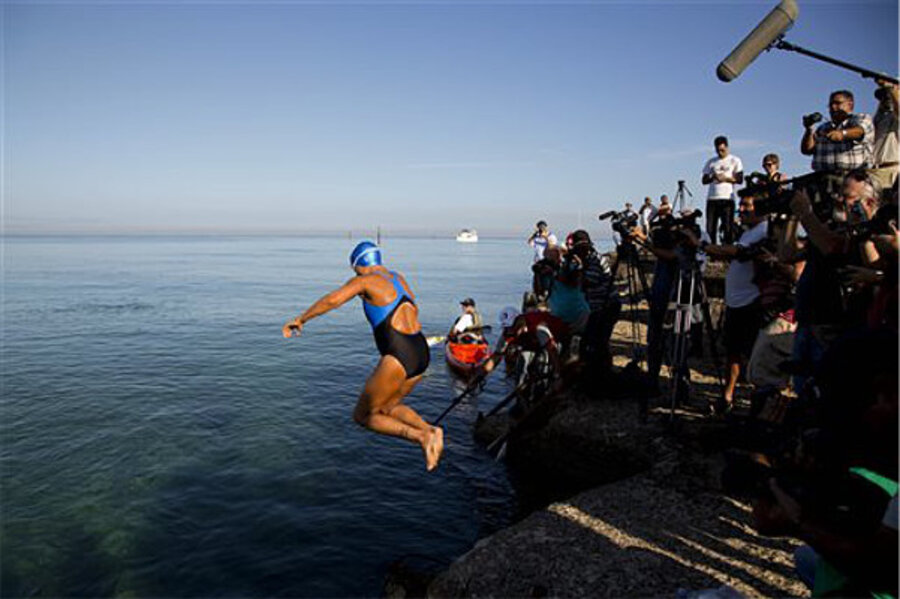Diana Nyad nears the end of her Cuba-to-Florida endurance swim
Loading...
| KEY WEST, Florida
With her lips and tongue swollen, US endurance swimmer Diana Nyad edged closer to Florida on Monday in her attempt to become the first person to swim the treacherous waters from Cuba to Key West without a shark cage.
Nyad has made it farther than in any of her previous four tries, and she was about 5 miles from Florida on Monday morning, according to her representatives. She was on course to swim about 112 miles and expected to arrive in Key West on Monday between 4 p.m. and 6 p.m. EDT.
Doctors who are traveling with a team of Nyad supporters said her swollen lips and tongue were causing her speech to be slurred, and they were worried about her airways, but they have not intervened, according to a post on Nyad's official website.
Nyad's journey began Saturday morning when she jumped from the seawall of the Hemingway Marina into the warm waters off Havana. She has been swimming the Florida Strait ever since, stopping from time to time for nourishment.
She had gotten very cold overnight, her team said, so they decided not to stop her to eat and drink in hopes that swimming would keep her warm.
"I admit there's an ego rush," Nyad said before the swim began. "If I — three days from now, four days from now — am still somehow bringing the arms up and I see the shore ... I am going to have a feeling that no one yet on this planet has ever had."
Nyad, who recently turned 64, tried the swim the Strait three times in 2011 and 2012. She had also tried in 1978.
Her last attempt ended amid boat trouble, storms, unfavorable currents, and jellyfish stings that left her face puffy and swollen.
This time she wore a full bodysuit, gloves, booties and a mask to help protect her from stings. Before the swim she said the suit slowed her down, but she believed it would be effective.
A 35-person support team is accompanying her at sea. Equipment that generates a faint electrical field around her is designed to keep sharks at bay, and a boat drags a line to help keep her on course.
Australian Susie Maroney successfully swam the Strait in 1997 with a shark cage, which besides protection from the predators, has a drafting effect that pulls a swimmer along.
In 2012, Australian Penny Palfrey swam 79 miles toward Florida without a cage before strong currents forced her to abandon the attempt. This June, her countrywoman Chloe McCardel made it 11 hours and 14 miles before jellyfish stings ended her bid.
In 1978, Walter Poenisch, an Ohio baker, claimed to have made the swim using flippers and a snorkel. Critics say there was insufficient independent documentation to verify his claim.
Nyad first came to national attention in 1975 when she swam the 28 miles around the island of Manhattan in just under eight hours. In 1979 she swam the 102 miles from North Bimini, Bahamas, to Juno Beach, Fla., in 27.5 hours.
Nyad is also an author of three books, a motivational speaker, and an occasional reporter and commentator for NPR.







